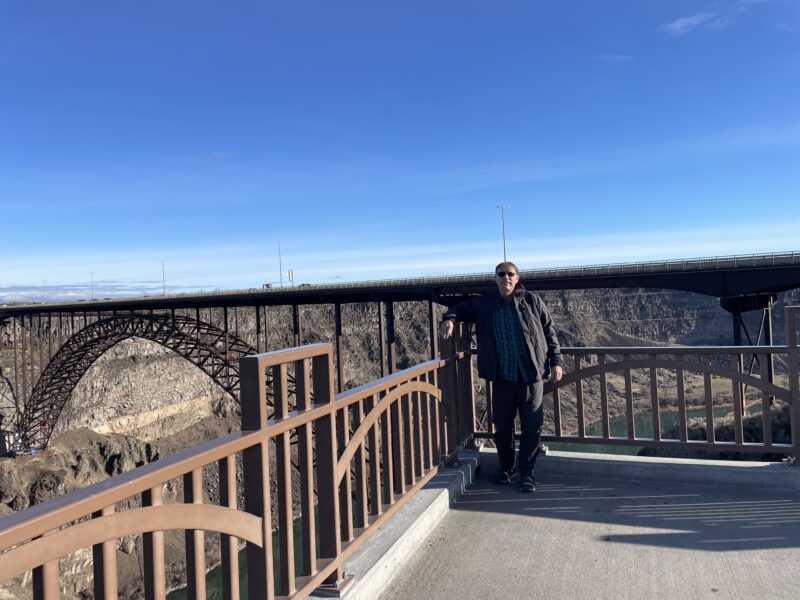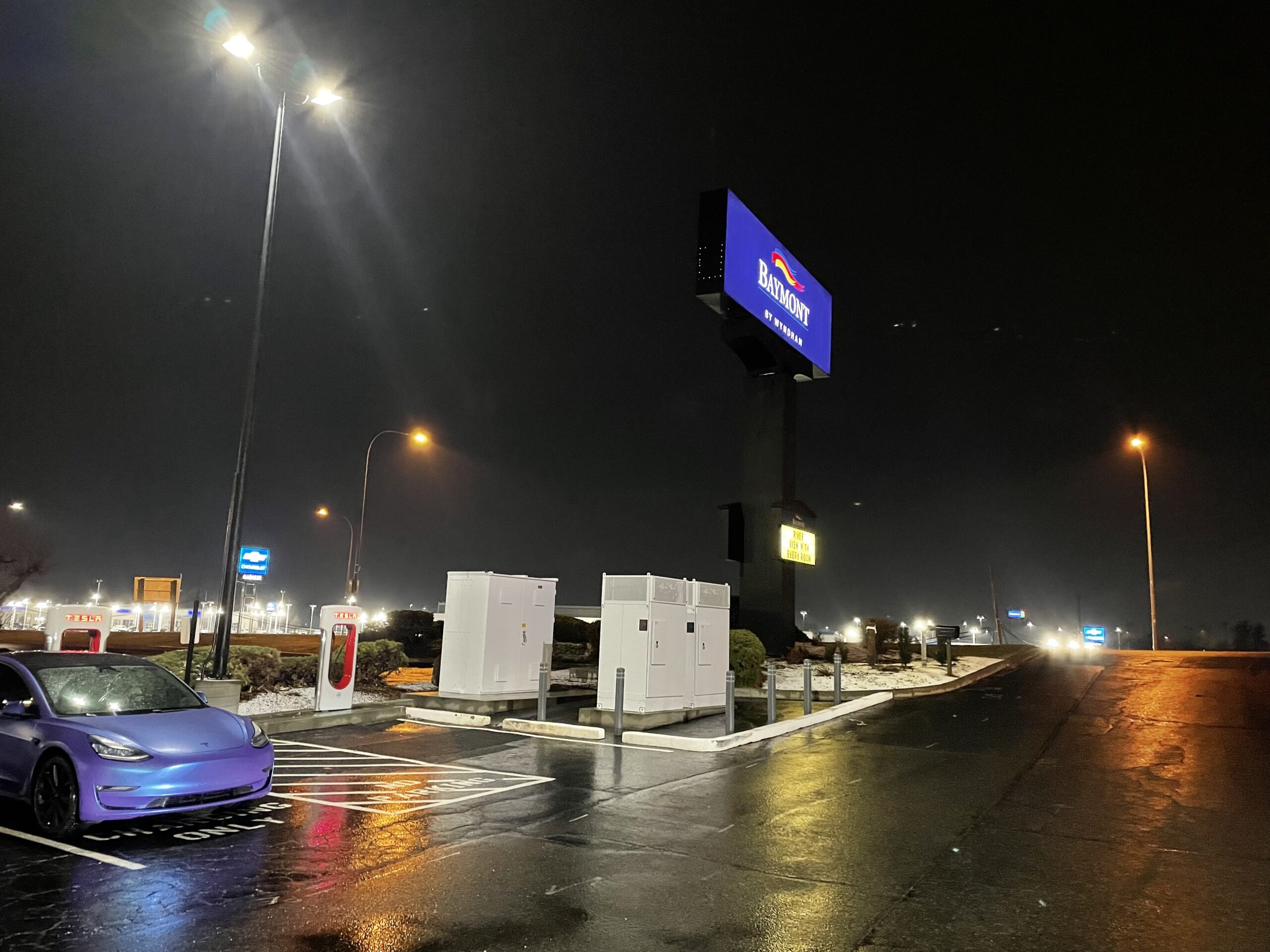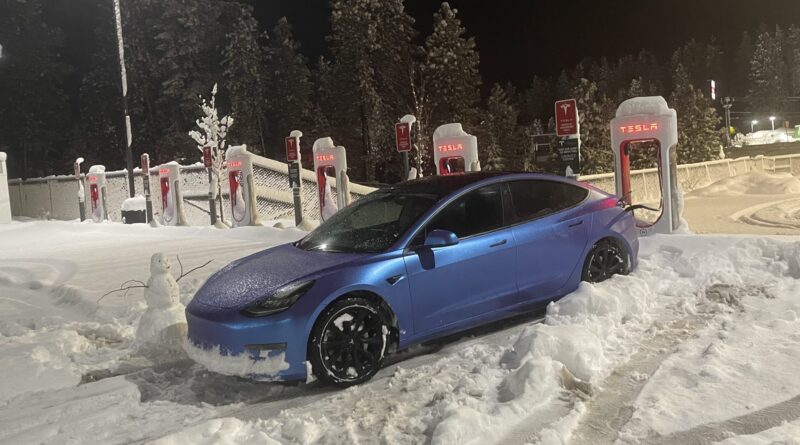What I Learned On My “Tesla Cannonball” From Tampa To Seattle
In the article, I describe what I learned about Tesla Supercharging, Tesla Autopilot & Full Self Driving, gas station food, the healthcare system in the US, and my initial impressions of Seattle. A few months ago, my son decided to move from Florida (where he has lived his whole life) to Seattle. I mentioned that is about as far away from Florida as you can get in the continental US, and he replied “that is kind of the point.” I don’t know if he will like Seattle (more about that later), but I think it is good to leave the area you grew up in, because it helps you mature and better understand different regional perspectives. I moved from Minnesota to Florida at a similar age 30 years ago and it is an important part of my life experience.

I’m using the term “cannonball” in a general sense to describe a long trip across the country. We didn’t drive 24 hours a day like in a real “cannonball” run; we stopped to sleep at hotels/motels. The car was filled with my son’s belongings. Otherwise, we could have just slept in the back as I described in this article. Although, a Model 3 is much less comfortable to sleep in (especially for two people) than the larger Model Y.

Autopilot & Full Self Driving
My son drove on Tesla Full Self Driving (FSD), while my profile was set to use Navigate on Autopilot (NOA). I found I prefer Navigate on Autopilot for driving on interstates because it doesn’t change lanes without warning (which happens with FSD even if you have it set to “minimal lane changes”). I think it also might nag you less, but I’m not sure about that.
I appreciate all the truck drivers who bring me all my food and other goods, but they do clog up the interstates, and I found that about 2% of the time they would confuse NOA/FSD into slowing down from 80 mph to 50 mph (called “phantom braking”). It might even brake more extremely than that, but I don’t let it continue because going slower than 50 mph on the interstate is quite dangerous.
Five months since my last article on this, FSD has made little progress, vindicating my prediction that FSD is years away from working as a level 5 driver. I know — now the optimists all think V12 will solve all the problems that 5+ years of development have been unable to solve. I think that is possible, but over 30 years of software development experience tells me a radical rewrite of software regresses in function 99% of the time and usually take years to get to the level of function as the previous architecture. The optimists tell me my 30 years of experience mean nothing because artificial intelligence (AI) works differently, and they are partially correct. It does work differently. I have been very impressed with the stunning progress with both large language models (LLM) and picture and video generation in a very short period of time. Of course, I’m impressed with the ability of computers to play chess and Go. But I haven’t been impressed with the progress of FSD. I keep an open mind and certainly hope that FSD starts to progress at the high rate of speed LLMs have been progressing at, but we won’t know until more people get V12 and see how it advances.
Having said all of that, NOA/FSD was great for this trip (compared to cruise control), and it meant I could drive longer distances with less fatigue. I really refuse to drive more than 50 miles now without some kind of Autopilot or lane centering and traffic aware cruise control (TACC). It is just too tiring for me (maybe I’m just getting old, lazy, and spoiled).

Supercharging
Much has been written about how reliable Tesla Superchargers are compared to other fast chargers, including this great recent article by my friend Steve Hanley. The chargers were 100% reliable in my experience, and I was surprised how many had been upgraded from 150 kW (Gen 2) to 250 kW (Gen 3). I travelled in early December (which is not around any big holidays in the US), so the chargers were never more than 50% used. This significantly reduces charging time if you arrive at the charger with a low state of charge (below 30% or so), maybe saving you 10 or 15 minutes.
We decided we were going for speed more than efficiency, so we tried to go about 75 or 80 mph during most of the trip (slowing down based on speed limits and weather, of course). I’ve been driving electric for 12 years (mostly around Tampa), so I knew that even though my son’s 5-year-old Tesla has had very low battery degradation (can normally get up to 295 miles of range), going this fast it wouldn’t get anywhere near 295 miles per charge. In addition, I knew that it wasn’t time efficient to charge the car higher than 80% (~235 miles), since the charging rate is then dramatically slower. I also knew that we didn’t want to get below 5% (15 miles), since we might be stranded if we made a wrong turn in an unfamiliar area. So, doing that math, we had 235 miles minus 15 miles or 220 miles of range to use on each 20-minute charge (we prefer to charge 5% to 80% at a 250 kW charger).
We found that with 220 miles of range, we could could go about 150 miles safely, which is about 2 hours of driving. Even with Tesla’s excellent driver assistance, that is about as long as I want to drive without a short break. So, all is good? Not exactly.
During the drive in the western United States, the chargers were less common and frequently 50 or 80 miles apart. Now, you may think that is fine —I have 295 miles of range, why do I care that the chargers are spaced out a bit? It all became obvious on a stretch of road in rural Kansas and eastern Colorado. With temperatures of about 30 degrees Fahrenheit, or minus 1 degree Celsius (so, the battery using some power to keep warm and precondition for faster charging, plus some power to keep us warm), a 20 mph headwind, and gaining significant elevation, I noticed the car had about 165 miles of range yet didn’t expect I could make it to a Supercharger only 115 miles away. So, I found when the chargers are spaced out (like they are in parts of rural America), I found we had to charge to 90% or 100%, which meant we would charge an hour to drive 90 minutes, a much different situation to charging 20 minutes to drive 2 hours! I expect Tesla will continue to roll out chargers at an incredibly fast pace, especially now that the company is expecting much more use since everyone but Stellantis has adopted the NACS standard plug.
I refuse to even consider using a non-Tesla fast charger, since the reliability is known to be so low, but I’ll give them a chance if I hear things have improved. It also doesn’t hurt that I get free Supercharging from referral credits (thank you, CleanTechnica readers, for using my referral code).


While in Denver, I took a detour into the emergency department when my grandson got a bad case of the flu and got very dehydrated. The US healthcare system may be a financial mess, but it did a good job of getting him hydrated, so he was able to recover.



I initially complained that this station was 4 miles off the interstate, but it was such a great stop (with great food options, including a Hawaiian restaurant) that it was well worth the small detour.




On the West Coast, we noticed that many times the restrooms listed by the car’s software as available for use were either closed at night or had a sign saying “for customers only.” We found these signs only on the West Coast, where homelessness is a significant issue. In the rest of the country, where the chargers were at gas stations (including the excellent Buc-ee’s), this wasn’t an issue because the gas stations were open 24 hours, usually had clean bathrooms, and were open to the public.

We got caught in some deep snow in Washington and discovered the traction of the rear-wheel-drive Model 3 with all season tires (with lots of tread) wasn’t that great. They wouldn’t let us cross the pass without chains (or 4-wheel drive), and I’m glad we didn’t try. The other drivers with chains said it was a $500 fine if you got caught without chains, and they also said it was hard to make it even with chains. We got a motel and the road was 100% clear in the morning due to the great work done by the Washington Department of Transportation.
Seattle
When we got to Seattle, I helped my son move into his apartment and spent some time exploring the city. I loved the food and the public transportation, but found the costs significantly higher than in Florida. Some stores were still boarded up from the demonstrations/riots of 2020, and they have a severe homeless problem in the city. I feel downtown Seattle has great potential but needs to figure things out or it risks going the way of other once great cities like Detroit. I don’t know the solution, but it does have some significant problems.
Conclusion
I went on this trip to bond with my son, and I found out that his situation with his girlfriend in Florida is “complicated” and he really doesn’t like the way the US uses the Electoral College to elect presidents. In addition, it confirmed my impressions of Tesla’s driver assistance technology and I learned new insights into how to take long trips in a Tesla. One last observation I will make is that although I could use the GPS to navigate to the Superchargers, I would love if Tesla put up huge signs. This would both help EV owners find the chargers and also help people still driving gas cars know that they exist.
Disclosure: I am a shareholder in Tesla [TSLA], BYD [BYDDY], Nio [NIO], XPeng [XPEV], Hertz [HTZ], NextEra Energy [NEP], and several ARK ETFs. But I offer no investment advice of any sort here.
All images by Paul Fosse
Have a tip for CleanTechnica? Want to advertise? Want to suggest a guest for our CleanTech Talk podcast? Contact us here.
Latest CleanTechnica.TV Video

CleanTechnica uses affiliate links. See our policy here.

